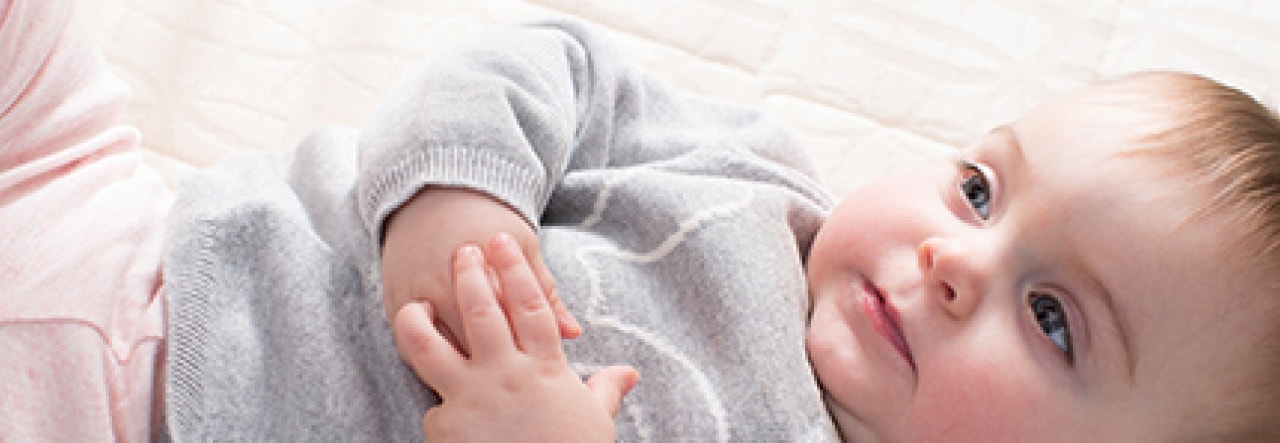According to the American Academy of Pediatrics, approximately 3500 infants die every year in the United States from sleep related infant deaths like accidental suffocation and strangulation in bed. Since October is Safe Sleep month, here are some simple things you can do that are known to reduce the risk of suffocation, which may also help other sleep-related deaths. And, as well, here are some facts regarding “breathable mattress” myths.
Breathable Mattresses Aren’t the Solution To Avoid Suffocation
In recent years, “breathable” crib mattresses have come into the marketplace, in an attempt to address the perceived risk of suffocation when the baby is lying face down. When a baby sleeps on a crib mattress that is firm and flat, it’s impossible for the baby to go head down into the mattress and suffocate. There is certainly nothing wrong with providing extra air around a baby, but “non-breathable” mattresses (i.e. typical mattresses with firm surfaces) are not the cause of suffocation. The Consumer Product Safety Commission and the American Academy of Pediatrics have data which demonstrates that baby suffocation rarely has anything to do with the mattress.
Removing Soft Bedding Is the Solution To Avoid Suffocation
Studies done by the Consumer Product Safety Commission have found that most suffocation is related to soft bedding, loose blankets, quilts, pillows, soft stuffed toys, and blankets (including blankets that are rolled up around the walls of the crib). Since these items can block a baby’s ability to breathe, the best way to reduce the risk of suffocation is to keep these items out of your baby’s crib.
Breathable Mattresses Can Actually Cause More Harm Than Good If Not Designed Properly
Most “breathable” mattresses remove the waterproofing on the mattress and allow the baby to breathe through the mattress cover and into the interior of the mattress, forcing the baby to breathe stale air that has been sitting in the interior. If milk has been spilled, or urine vapor (or fecal material or even just plain sweat or saliva) has entered the interior of the mattress, then bacteria and mold could grow inside the mattress where baby could breathe it. And if flame retardant chemicals, perfluorinated chemicals, or pesticides were used in the mattress, these could present a risk for the baby as well. In other words, most “breathable” mattresses remove the waterproof layer and allow for the baby to breathe into the interior space of the mattress – precisely the same space that’s collecting and growing contamination.
Naturepedic Has a Better Way To Add Breathability
Naturepedic has a better solution for parents that want a breathable mattress. They offer a separate breathable mattress pad that fits on top of the already firm and flat Naturepedic crib mattresses. This pad provides a layer of fresh air between the baby and the mattress which provides extra fresh air from the room for baby to breathe. The breathable pad provides just as much (or more) extra fresh air than the other “breathable” mattresses on the market. The baby doesn’t have to breathe into the interior space of the mattress with its stale air and its collection of urine, spilled milk, etc. The breathable mattress pad can be removed at any time and thrown into the washer and dryer. This solves the hygiene issue with adding breathability for the baby. The Naturepedic crib mattres cover provides a layer of fresh air between the baby and the mattress. This can help with extra breathability and temperature regulation, and also reduces the possibility of “sweatiness.” This pad can be added to any crib mattress and will turn any mattress into a properly designed “breathable crib mattress.”
For More Information
For more information on sleep-related infant deaths and suggested solutions, see: - Consumer Product Safety Commission - American Academy of Pediatrics - SIDS and Other Sleep-Related Infant Deaths: Evidence Base for 2016:Updated Recommendations for a Safe Infant Sleeping Environment *Disclosure: Debra Lynn Dadd is a compensated Naturepedic partner, all views and opinions are her own.
About Guest Blogger Debra Lynn Dadd:
Debra Lynn Dadd has more than thirty years experience finding nontoxic consumer products. She has been a leading consumer advocate since 1984, when she wrote the first book on toxic chemicals in consumer products and safer alternatives. Since, Debra has become the most prolific writer on the subject, with seven more published books and the largest website on nontoxic living on the internet at www.debralynndadd.com.
 BABY
BABY  KIDS
KIDS  ADULT
ADULT  LEARN
LEARN  STORES
STORES 